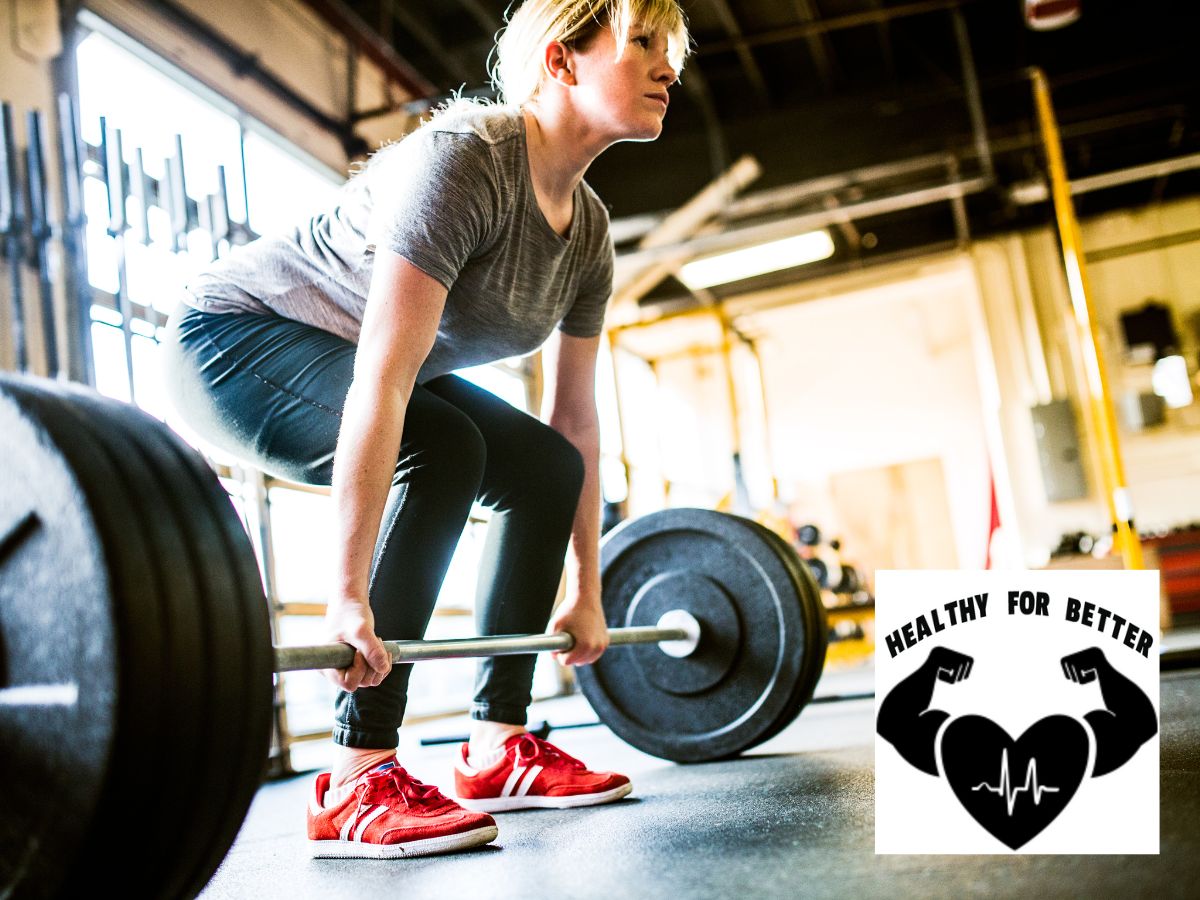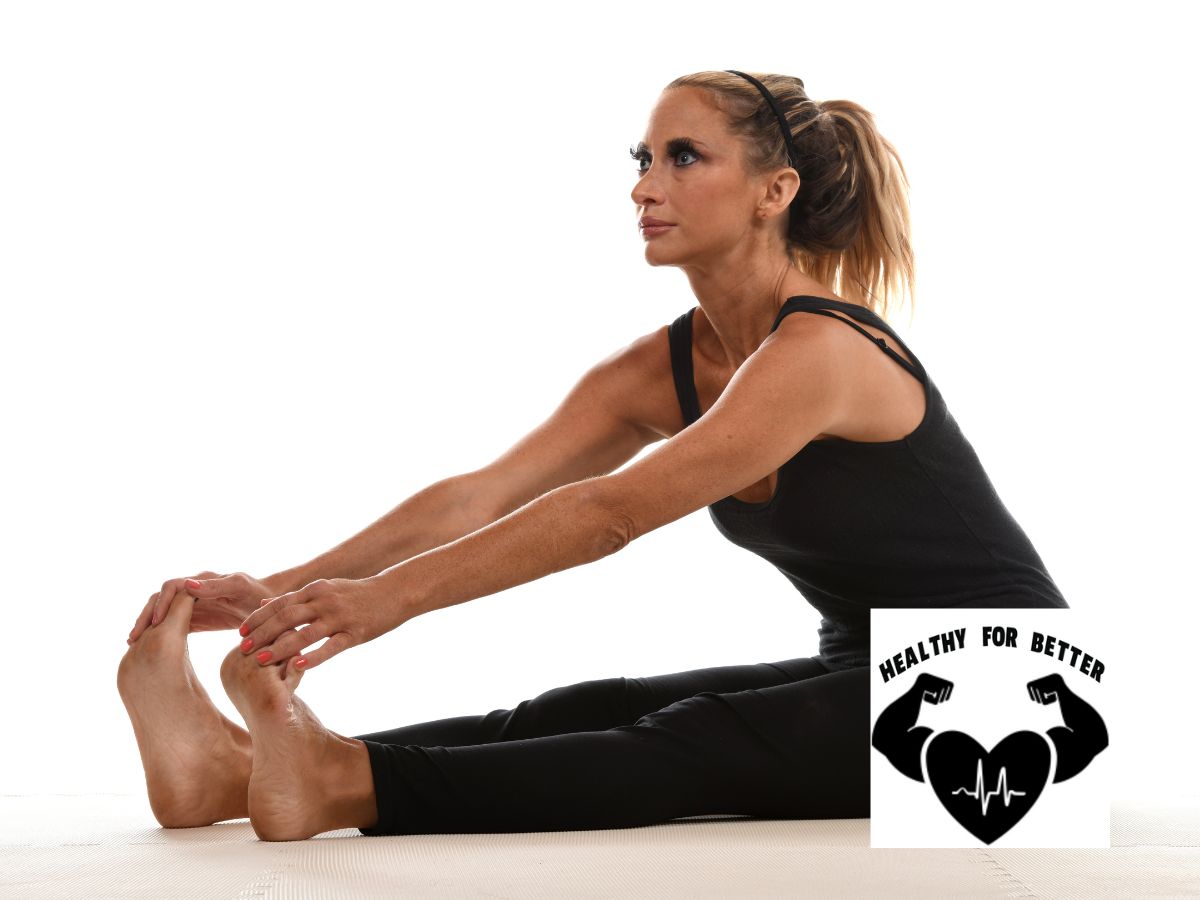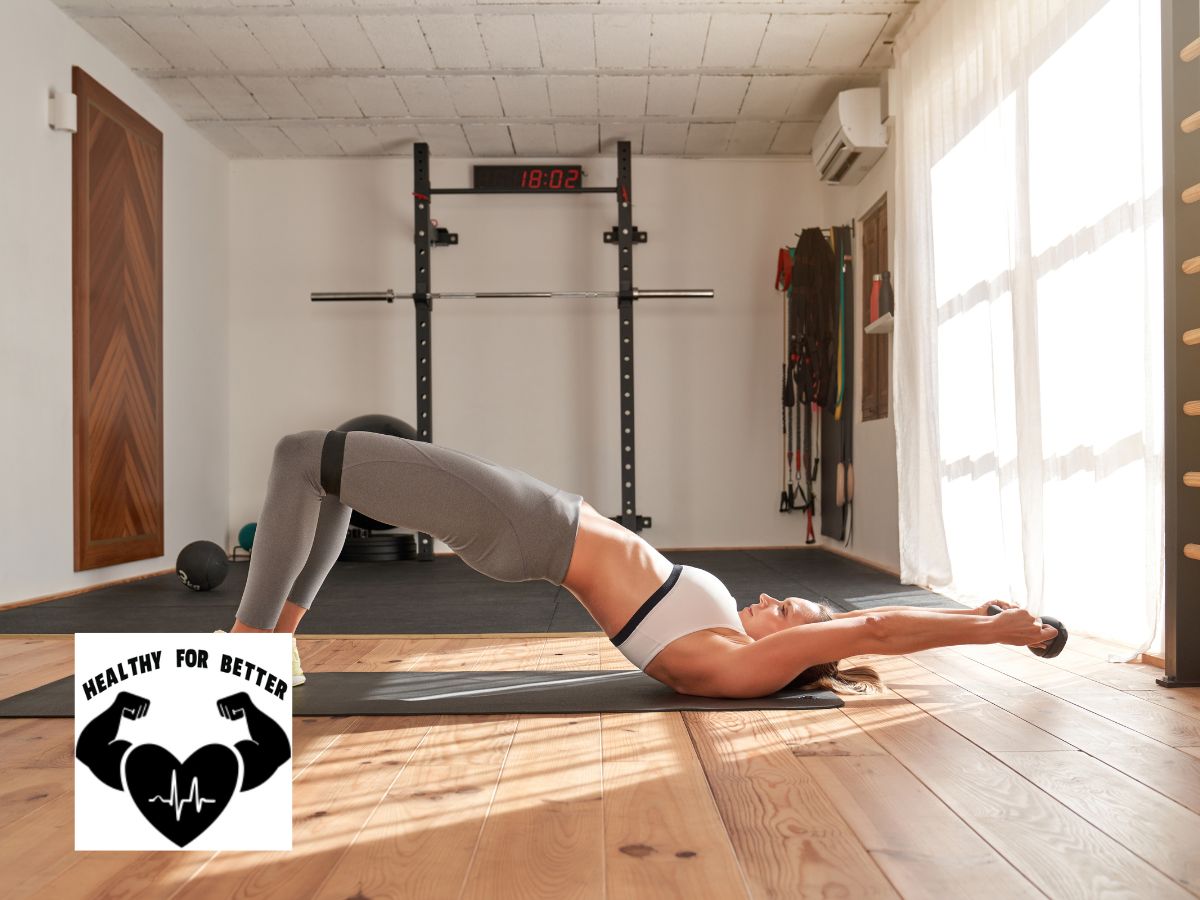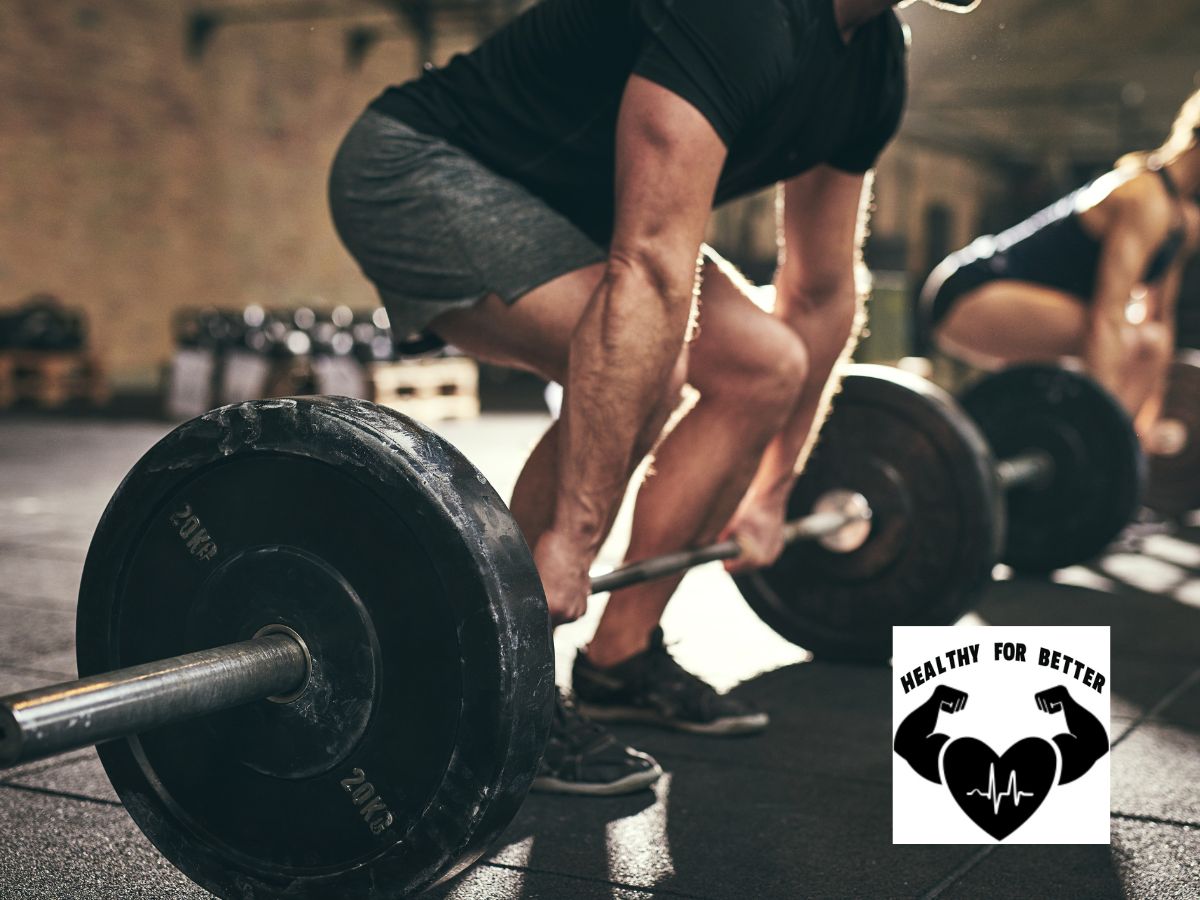Deadlifts can be a great exercise for building strength and size, and burning calories, but you must perform them properly with a proper warm up to prevent injury.
Before performing deadlifts, warm up your body and prepare muscles for the exercise. Properly warming up for deadlifts is different than warming up for other exercises and it is essential to do it correctly.
Before you begin your deadlift workout, warm up with exercises that are specifically tailored to the movement. Understand why each exercise is important and how it can help improve your performance.
Benefits Of Warming Up For Deadlifts
Warming up is essential for any exercise routine, and deadlifts are no exception. Taking a few minutes to warm up can help prepare your muscles for the workout and reduce your risk of injury. Here are some of the key benefits of warming up properly before deadlifting:
- Stretching and warming up can improve flexibility, range of motion, and reduce the risk of injury when deadlifting.
- Warming up your muscles can prepare them for the upcoming workout and help to improve performance, allowing you to do more reps.
- Prepare your body for deadlifting by taking time to warm up to reduce the risk of injury.

Preparing Your Body For Deadlifts
Before deadlifting, make sure you are hydrated and have eaten a full meal to reduce the chance of injury.
Before lifting, take a few moments to practice your form. Stand with feet slightly wider than shoulder-width apart and keep your back straight and core engaged. Focus on maintaining the right posture.
Make sure to maintain a proper grip on the barbell, with hands placed just outside of your legs and thumbs wrapping around it. This will allow the weight to be evenly distributed across your body, preventing any muscle strain.
Taking the time to properly warm up and prepare your body can reduce the risk of injury and help you get the most out of your workout..

Proper Warm-Up Exercises For Deadlifts
Prepare your body for a deadlift by doing dynamic stretching and warm-up exercises that target your hips, glutes, and hamstrings. This will help to prevent injury and improve performance.
Here are a few warm-up exercises you can do before you start your deadlifts:
• Glute Bridges: Lie on your back and keep your feet flat on the floor. Lift your hips up off the ground and hold for a few seconds. Repeat 10 times.
• Air Squats: Stand up with your feet shoulder-width apart and your arms at your sides. Squat down and hold for a few seconds, then stand back up. Repeat 10 times.
• Lunges: Stand up with your feet shoulder-width apart and your arms at your sides. Step forward and lower your body until your front knee is bent at a 90-degree angle. Hold for a few seconds, then step back up. Repeat on the other side. Do 10 reps for each leg.
• Hip Rotations: Stand up with your feet shoulder-width apart and your arms at your sides. Rotate your hips in a circular motion, 10 times in each direction.
Stretching Exercises Before Deadlifts
Include stretching in your warm-up before deadlifting to improve range of motion, flexibility and reduce injury risk. Some common stretches for deadlifting include:
Hip Flexor Stretch: Start in a lunge position and kneel down with your back knee on the ground. Pull your hips forward until you feel a stretch in your hip and thigh. Hold for 15-30 seconds, then switch sides.
Glute Stretch: Sit on the ground with one leg outstretched and the other bent. Place your ankle on the bent knee and slowly lean forward until you feel a stretch in your glutes. Hold for 15-30 seconds, then switch sides.
Hamstring Stretch: Sit on the ground with both legs outstretched. Bend your torso forward and reach for your toes until you feel a stretch in your hamstrings. Hold for 15-30 seconds.
These stretches should be done for both sides and can be repeated multiple times. Take your time and listen to your body, gradually working on increasing your range of motion with each stretch. Doing these stretches before deadlifting can help to ensure you're ready for the exercise.

The Role Of Mobility Work In Deadlifts
Doing mobility work for deadlifts is essential. It increases your range of motion, allowing you to lift heavier weights more easily and reducing the risk of injury. Plus, it helps improve your form and flexibility.
To maximize performance and minimize injury risk, focus on mobility work like dynamic stretching exercises, foam rolling, and trigger point therapy. Doing these before your deadlift session can increase range of motion and keep joint health intact.
Don't forget that mobility work isn't a replacement for a warm-up – perform a dynamic warm-up first, then do mobility work afterwards to increase your range of motion and get ready for the workout.
Before deadlifting, engage in dynamic stretching, foam rolling and trigger point therapy for improved performance and a low risk of injury.

Dynamic Warm-Up Movements For Deadlifts
Doing dynamic warm up movements before deadlifts will increase blood flow, activate muscles and reduce the risk of injury.
Warm up before deadlifting by doing dynamic stretching and mobility work. Additionally, you can start with jogging or skipping to increase your heart rate and body temperature.
Leg swings, high knees, and arm circles are great warm-up exercises for deadlifts. To further loosen up your hips and ankles, you should also do some hip circles and ankle rolls.
Warm up for deadlifts with dynamic exercises like good mornings, single-leg deadlifts, and glute bridges to strengthen your core and hips, activate your glutes and hamstrings.
Taking the time to do a dynamic warm-up will reduce the risk of injury and help ensure your body is prepared for a deadlift session.
Activation Exercises To Improve Deadlift Performance
In order to maximize the benefits from deadlifting, it's important to not only warm up your body, but also activate your muscles through a series of activation exercises.
Strengthen your muscles and deadlift correctly with glute bridges, hip thrusts, and banded pull-throughs.
Glute bridges – Lie on your back with knees bent and feet flat on the floor. Push through heels to lift hips up, squeeze glutes, and hold for a few seconds before slowly lowering back down. Do glute bridges to activate your glutes and hamstrings prior to deadlifts.
Hip thrusts – Sit on the ground with your feet firmly planted, back against a bench, and a barbell across your hips. Push through your heels and squeeze your glutes to hip thrust the barbell up and off the floor, then slowly lower back down.
Banded pull-throughs are a great exercise for working the glutes and hamstrings. Secure a looped resistance band between a squat rack and an anchor point. Stand with your feet hip-width apart and hold the band in both hands, arms extended in front of you. Slowly pull the band through your legs, bending at the hips, then slowly release back to your starting position.
Do these pre-workout activation exercises to help you reach your deadlifting goals and ensure your body is using the correct form.

How To Perform Deadlifts With Proper Form
When practicing the deadlift, make sure to use correct form for safety and effective lifting. Here are some key tips to remember when doing deadlifts:
1. Stand with your feet hip-width apart, with your toes slightly pointed outwards.
2. Bend your hips and knees, and grab the bar with an overhand grip. Your hands should be just outside of your legs.
3. Keep your back straight and your chest up. Keep your shoulders back and your arms straight.
4. Take a deep breath and then stand up with the bar, keeping your core tight.
5. Push your hips forward and straighten your legs at the same time.
6. Hold the bar and stand up tall with your shoulders back.
7. Lower the bar back down to the ground using the same form.
Common Deadlift Mistakes To Avoid
Before deadlifting, take note of common mistakes to avoid to prevent injury and maximize your workout:
Lower Back – To help protect your spine, make sure to keep the natural arch in your lower back by engaging your glutes and core, and avoid rounding your lower back.
Knees Locking Out – When performing exercises, keep your knees slightly bent and push your hips back to avoid locking out your knees and putting excessive pressure on your lower back.
Overreaching – Check to make sure you are not overreaching. Keep your shoulders over your hips and your hips over your feet when exercising, and stay firmly rooted in the middle of your foot.
Too Heavy Of Weight – It is important to use the appropriate weight. Start with a lower weight, and increase it progressively as your strength and skill improve. Make sure you do not strain your body while exercising.
Shoulders Back – Keep your shoulders back and down, with a flat back throughout the action to avoid straining your neck.
Pre-Workout Nutrition And Hydration
Be sure to stay hydrated before and during your deadlift workout by drinking at least 16-20 ounces of water beforehand, and 8-10 ounces every 20 minutes. This will help keep your muscles and body hydrated, as well as improve your performance.
Eating a balanced meal containing complex carbohydrates and protein about two hours before your workout will give you the energy you need for performance. If you don't have time for a full meal, then a snack with protein, healthy fats, and complex carbohydrates should suffice.
Before your workout, make sure to stretch and do some dynamic exercises, like light bodyweight movements. This will help warm up your muscles, enabling you to maximize your performance and keep your body safe from harm.
Taking The Time To Visualize Your Deadlifts
Visualizing your deadlift before you begin is an important part of the warm-up. Taking the time to focus on form and technique ensures that you maximize the efficiency of your workout.
Visualize yourself completing the lift with perfect form. Close your eyes and imagine your body moving through the motion in a smooth, controlled manner. Focus on keeping your back straight and engaging your core. Picture the barbell coming up effortlessly and revel in the feeling of success and satisfaction that comes with achieving your goal.
Close your eyes, take a few deep breaths and visualize what you’re about to do. This will help increase your focus and motivate you to stay in the moment during your warm-up and lift.
Visualization while deadlifting can help improve your performance and reduce injury risk. Focus on form and technique before starting your warm-up for optimal results.
Listening To Your Body During Deadlifts
Pay attention to your body while deadlifting. Notice how your muscles feel and be aware of any aches or pains. If something feels wrong, stop and assess the situation before continuing.
Before beginning your set, take some time to focus and just breathe. This will help you to be mindful of your body and how it's feeling. During your set, take note of any discomfort or tightness in your muscles. If something feels off, then it's best to stop and reassess the situation.
It's also important to make sure that you're using proper form. The key to a successful deadlift is to maintain proper form throughout the entire movement. Be mindful of how your body feels and make sure you're engaging the right muscles.
Take some time to warm up before you start and do some dynamic stretching and mobility drills. This will help prepare your body for the physical demands of a deadlift and allow you to perform each rep with proper form, which reduces the risk of injury.
Pay attention to your body during deadlifts, and warm up properly beforehand. Doing so will keep you safe and help you get the most out of your workout by tuning in to muscle aches, pains, and any discomfort that arises.
Post-Workout Recovery Techniques For Deadlifts
To reduce soreness and stiffness after deadlifts, take time to focus on recovery techniques. This will help your body prepare for the next set of lifts.
Stretch and use a foam roller to help release tension in parts of your body used for deadlifts, such as your glutes, hamstrings, and lower back, to facilitate quicker recovery.
A cold compress and a heating pad are both effective recovery techniques to reduce inflammation, soreness and help relax your muscles for faster healing.
Take some time to rest and recover after lifting. Doing some light stretching or using a cold compress can reduce soreness and help your body prepare for your next set of deadlifts. Implementing the right post-workout recovery strategies will ensure your training session is successful and safe.
Frequently Asked Questions
How Often Should I Warm Up For Deadlifts?
It is important to warm up before any exercise, especially for deadlifts, as it helps reduce the risk of injury and prepares your body for the physical activity.
Warm up for deadlifts two to three times per week with dynamic exercises like bodyweight squats, lunges and hip bridges to activate the muscles needed and improve mobility.
Incorporate foam rolling, active stretching, and dynamic stretching into your warm up routine to loosen up the fascia, increase flexibility, improve coordination and enhance power.
Warm up your muscles and perfect your form with a few lighter sets of deadlifts before increasing the weight. Foam rolling and stretching first will also help you prepare for the heavier sets.
Are There Any Risks Associated With Deadlifting?
When deadlifting, it is important to be aware of the potential risks and take steps to avoid injury. Prior to beginning any strength training program, it’s essential to understand the associated dangers and take appropriate precautions.
To avoid injury, use the correct form and warm up properly before deadlifting.
Begin with a weight that you can handle and gradually increase it as your strength increases, to avoid putting unnecessary strain on your muscles and the risk of injury.
Start with a weight that is manageable for your fitness level and increase it gradually as your strength increases to avoid putting unnecessary strain on your muscles and reduce the risk of injury.
Take regular breaks between sets to rest and recover and avoid fatigue and injury.
To get the most out of your deadlifting workouts and minimize your risk of injury, always warm up properly beforehand, use the correct form and technique, and focus on your breathing and weight.
What Type Of Equipment Do I Need To Warm Up For Deadlifts?
For effective deadlift warm-ups, you need a foam roller, lacrosse ball, light dumbbells and a light resistance band.
Foam rolling can help reduce tightness and soreness in the muscle groups used during deadlifts by targeting specific areas of tension.
Roll over a lacrosse ball with your bodyweight to release tension or pain in targeted areas.
Light dumbbells can be used to increase your range of motion and warm up your muscles. Try some arm circles, shoulder presses and chest presses to prepare for deadlifts.
Use a light resistance band for dynamic stretching to increase your range of motion and warm up your muscles for deadlifts. Try lateral shuffles and hip circles with the band for added flexibility.
Should I Use A Weight Belt During Deadlifts?
A weight belt can help you get the most out of your deadlifts by providing extra support to your lower back and maintaining proper form.
Beginners should not use a weight belt for deadlifts, unless they are comfortable with the exercise and able to control the weight. This will help them to maintain perfect form and avoid any injuries.
Experienced lifters may wish to use a weightlifting belt when lifting heavier weights. A belt can provide additional stability and help protect the lower back from strain. However, it should be noted that the belt is only supplemental support, not a substitute for proper form. Even when using a belt, make sure to keep your core tight and back straight.
Is It Possible To Warm Up Too Much For Deadlifts?
Warming up your body before deadlifts is important for minimizing the risk of injury and for preparing your muscles for the exercise. However, be careful not to overdo it.
Over-warming up for deadlifts can decrease your performance, as it fatigues your muscles and makes them unable to lift as much weight.
Keep your warm-up short and focused. Include dynamic stretches and movements that target your core, legs, and back to activate the muscles and prepare your body for exercise.
Increase your heart rate and body temperature before deadlifting by going for a few minutes on the treadmill or a short jog around the block. Don't overdo it, though, and save some energy for your lifts.
Keep your warm up short and focused, including dynamic stretches and movements for deadlifts to ensure the best performance. Increase your heart rate and body temperature, but don't overwork yourself and leave some energy for the exercise.
Conclusion
Warm-up sets for the deadlift are a key part of any successful training program. Not only does warming up reduce the risk of injury, but it also gets your body prepped and ready to lift heavier weights. When done properly, you'll find that you can deadlift with greater strength and confidence as well as perfect your technique more effectively so that you can maximize your gains.

